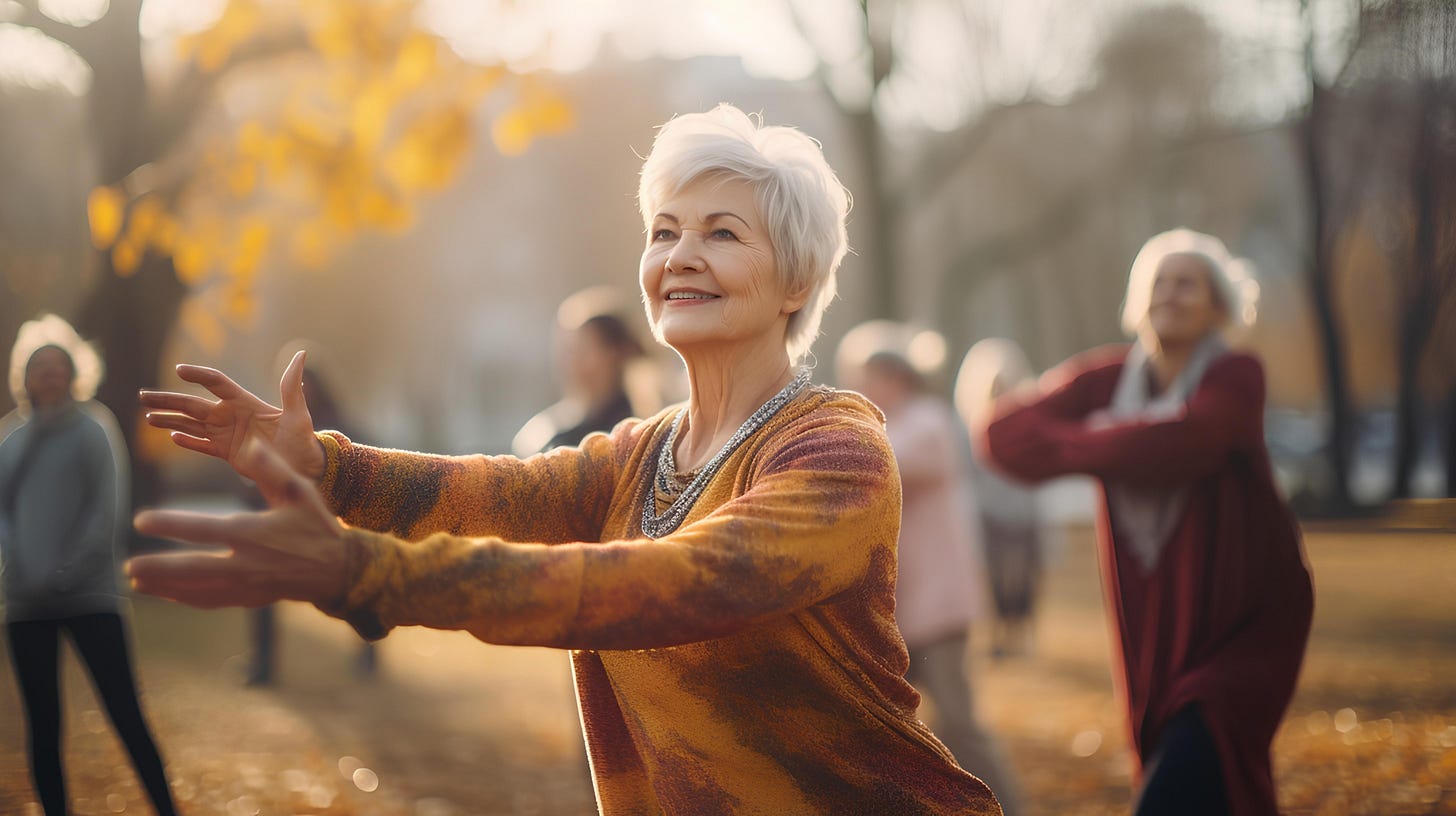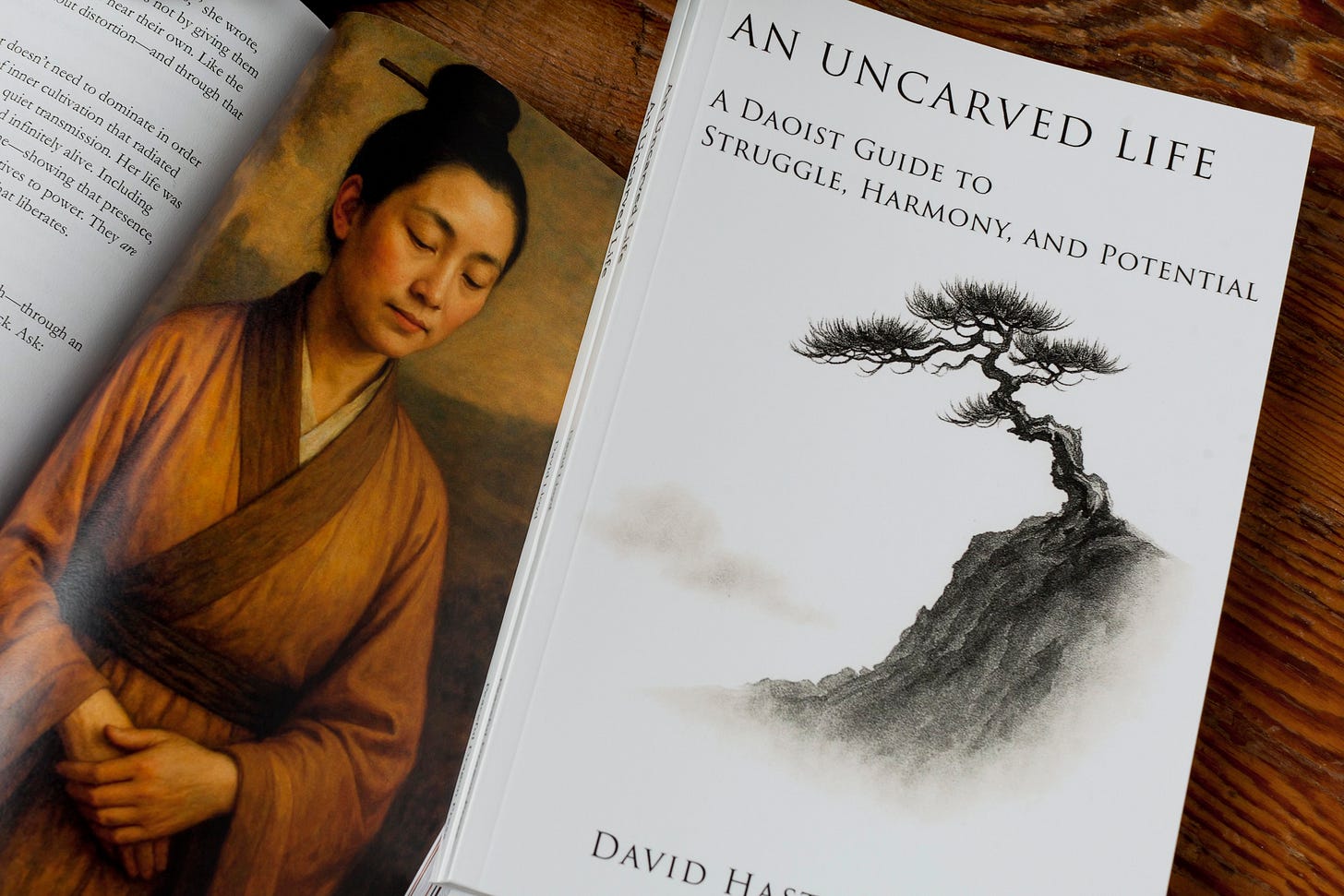What Qigong Does for Frailty: A Deep Look at the Latest Peer-Reviewed Science
Frailty is one of those conditions that often slips quietly into a person’s life. It begins as a slower walk or a slight hesitation when rising from a chair. Balance feels a bit less certain. Movements become smaller. Confidence shrinks. And as these changes accumulate, a person’s world can gradually become narrower. Frailty is more than physical decline—it touches emotional well-being, cognitive sharpness, and the sense of independence that shapes how we experience aging.
Modern medicine views frailty as a multidimensional condition involving muscular weakness, reduced mobility, low energy, cognitive strain, and vulnerability to stress. It is associated with falls, hospitalization, disability, emotional distress, and sleep problems. But there is an important truth emerging from recent research: frailty is not fixed. It can be improved, sometimes significantly, with the right kind of intervention.
This is what makes a new systematic review on Traditional Fitness Qigong (TFQ) so compelling. The paper analyzed 18 randomized controlled trials involving 1,339 older adults who were frail or pre-frail and explored the effects of Qigong forms such as Tai Chi, Baduanjin, Yijinjing, and Wuqinxi. What researchers found was a pattern of improvements across nearly every domain of frailty, from strength and balance to mood, cognition, sleep, and overall quality of life.
A Clearer Picture of Frailty and Why It Matters
Frailty is easy to misunderstand. Many assume it is simply part of aging, but frailty is a distinct clinical state. It reflects a decline in intrinsic capacity—the body and mind’s ability to adapt, recover, and engage with daily life. This decline increases the risk of injury, loss of autonomy, and diminished well-being. Yet what emerges repeatedly in modern gerontology is that the trajectory of frailty can be altered. The right interventions can rebuild strength, improve balance, stabilize mood, calm the nervous system, and restore confidence.
Qigong is uniquely positioned within this landscape because it blends physical movement, breath regulation, mental focus, balance training, and emotional calming. It is accessible to older adults, adaptable for various ability levels, and does not rely on equipment or high physical intensity. But the crucial question is whether these traditional practices hold up to modern scientific examination. This is precisely what the new meta-analysis set out to answer.
What the Researchers Did
The study searched major Western and Chinese databases and included only randomized controlled trials—the gold standard for evaluating interventions. Importantly, the authors required that participants be diagnosed as frail or pre-frail using validated tools. This means the population studied was not simply “older adults” but individuals already experiencing measureable decline. The trials compared Qigong with control conditions such as stretching, education, usual care, or no structured intervention. Outcomes were measured across frailty, physical function, cognition, mood, sleep, and quality of life.
This approach allowed the researchers to examine Qigong’s effects not only on the physical side of frailty but on the full constellation of factors that shape an older adult’s life.
Frailty Scores Improve in Meaningful Ways
Across fifteen studies, Qigong practice led to significant reductions in frailty scores. The Fried Frailty Phenotype—which measures grip strength, walking speed, weight loss, exhaustion, and physical activity—showed some of the largest improvements. This makes intuitive sense: Qigong builds lower-body strength, enhances coordination, regulates breath, and reduces fatigue through slow, controlled movement.
Multidimensional scales such as the Frailty Index and the Tilburg Frailty Indicator also improved. This is an important point because those tools evaluate social, psychological, and cognitive dimensions—not just physical decline. The consistency across different frailty measures suggests that Qigong does not simply strengthen muscles; it strengthens the whole person. Frailty is multidimensional, and Qigong appears to influence multiple systems at once.
Physical Performance and Mobility See Real Gains
Physical performance was measured using the Short Physical Performance Battery (SPPB), a clinically validated assessment of balance, gait speed, and lower-body strength. Qigong practitioners showed clear improvements in SPPB scores. They walked more smoothly, stood up more easily, and balanced more steadily. These changes matter because they translate directly into reduced fall risk and greater independence.
Activities of daily living—tasks like dressing or bathing—did not show consistent improvement. These activities often depend on many variables beyond physical performance, such as pain, home environment, or long-standing joint limitations. Qigong may contribute indirectly over time, but the research suggests that its strongest physical benefits appear in mobility, balance, and movement confidence.
Balance Improvements Are Especially Strong
Among all physical outcomes, balance showed the most robust improvement. Dynamic balance (tested by the Timed Up-and-Go assessment) improved significantly. Static balance (like standing on one leg) also improved. The Berg Balance Scale, another widely used clinical tool, showed upward shifts as well.
Balance is central to healthy aging. It determines whether someone can walk confidently, recover from small slips, navigate stairs, or move through tight spaces. When balance improves, fear decreases. And when fear decreases, movement becomes more natural.
Qigong is rich in weight shifting, rotational movements, slow transitions, and mindful attention to posture. These qualities retrain the neuromuscular system. They also calm the emotional system, because balance and confidence are deeply linked. In traditional Chinese thought, balance reflects internal harmony; in modern science, it reflects coordinated sensory and motor processing. Qigong supports both.
Strengthening the Hands and Regaining the Sense of “Ability”
Grip strength improved across several studies. This may seem like a small detail, but grip strength is one of the most powerful predictors of longevity. Strong hands indicate strong nerves, strong muscles, and strong metabolic vitality. Qigong movements that involve slow pushing, grasping, stretching, or tendon activation likely play a role in this improvement.
In Chinese medicine, hand strength belongs to the sinew system and reflects the smooth circulation of qi through the limbs. In modern terms, improved grip strength suggests better neuromuscular engagement and functional reserve.
Walking Speed Improves, but Endurance Is Mixed
Short-distance walking speed improved reliably. This is important because short transitions—crossing a room, stepping out of a vehicle, turning around—make up most of daily mobility. Faster walking speed correlates strongly with better survival rates and reduced frailty.
Endurance walking, measured by the six-minute walk test, did not improve consistently. This makes sense. Qigong is not designed to be aerobic. It trains balance, coordination, and controlled power—not cardiovascular endurance. The results reflect this structure: Qigong enhances quality of movement more than quantity of movement, and for frailty, this may be precisely what matters most.
Cognitive Function Becomes Sharper
Cognition improved in several domains, including attention, memory, and executive planning. One study using a detailed cognitive assessment found clear gains in the ability to plan and organize actions—skills that are essential for safe movement.
Why does Qigong help cognition? Slow, intentional movement requires sustained attention and coordination. Breathing synchronizes with action. The nervous system quiets. Cerebral blood flow improves. Inflammation decreases. These changes create an internal environment in which the brain can function more clearly. Qigong may not be “brain training” in the modern technological sense, but the traditional idea of “heart-mind harmony” aligns directly with these findings.
Mood Stabilizes and Sleep Deepens
Depression scores decreased. Anxiety scores decreased. Sleep quality improved significantly. These psychological benefits are not side effects; they are essential components of well-being in older adults. Poor sleep and chronic worry accelerate frailty. Calm breath, rhythmic movement, and gentle mental focus help regulate the autonomic nervous system, leading to greater emotional steadiness and better sleep.
Traditional Chinese philosophy would explain this by saying that the qi begins to move freely again. Modern physiology would describe it as increased vagal tone and decreased sympathetic activation. The language differs, but the lived reality is the same: the mind becomes quieter, and rest becomes deeper.
Quality of Life Rises—the Most Important Outcome of All
The most meaningful findings come from the quality-of-life assessments. Across several studies using validated tools such as SF-36 and WHOQOL, older adults reported feeling better overall. They experienced greater vitality, more ease in daily life, and a renewed sense of engagement with the world around them.
This is the ultimate aim of any health intervention. It is not enough to change numbers on a chart. What matters is that people feel more alive, more capable, and more connected.
Qigong appears to support this in a way that few other practices do, because it addresses the whole ecosystem of aging—body, breath, mind, and spirit.
In the End, Qigong Works Because It Is Multidimensional
Frailty is complex. Qigong is equally complex—but in a beneficial way. It strengthens muscles, improves balance, sharpens cognition, calms the nervous system, improves sleep, and supports emotional well-being. It is gentle, adaptable, and sustainable. It encourages awareness rather than force. And it gives older adults a sense of participation in their own healing.
The study’s conclusion reflects this multidimensional impact. Traditional Fitness Qigong “significantly improved multiple outcomes for frail or pre-frail older adults,” suggesting it may play a protective role in the progression of frailty. For clinicians, caregivers, and older adults, this research reinforces the value of Qigong as a meaningful tool for aging well. It is not simply an “alternative exercise”—it is a complete system of restoring capacity.
And for anyone already walking the path of aging, it offers something even more important: hope grounded in evidence. Frailty is not an endpoint. The body can learn again. Balance can return. Confidence can grow. Movement can feel like life again.
Reference
Sun, W., Li, L., Zhang, Z., Duan, X., Wei, J., & Soh, K. L. (2025). Effects of traditional fitness qigong exercise on frailty status and overall well-being in frail or pre-frail patients: A systematic review and meta-analysis. Frontiers in Medicine, 12, 1619729.
Like what you read? Keep exploring…
If this post resonated with you, you’ll love my book:
An Uncarved Life: A Daoist Guide to Struggle, Harmony, and Potential
This book blends timeless Daoist wisdom with real-world insight into how we can navigate struggle, cultivate inner peace, and live in alignment with our deeper potential. Drawing from classical texts like the Dao De Jing and integrating modern psychology and neuroscience, An Uncarved Life offers a grounded, poetic, and deeply personal guide to living well in a chaotic world.
Whether you’re seeking clarity, calm, or a more meaningful path forward, this book is a companion for anyone who wants to walk the Way with sincerity and strength.
Available now in print, Kindle, and audiobook formats.
Click here to get your copy on Amazon



